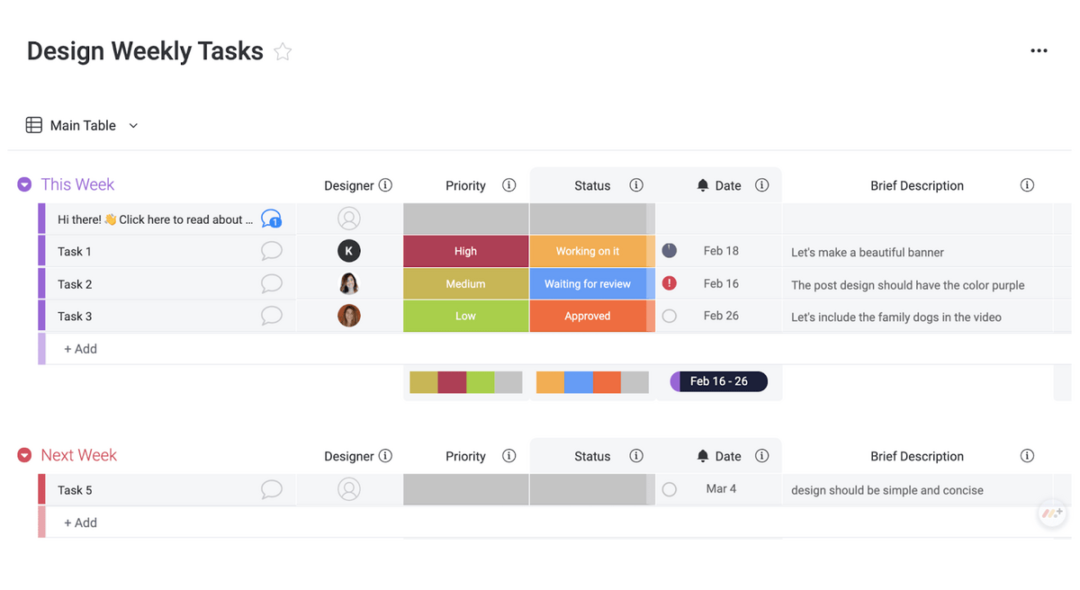Everything you need to know about project management software for architects
Blog: Monday Project Management Blog
As an architect, you have a pretty varied day-to-day schedule.
One moment you’re working through conceptual ideas and designs, the next, you’re collaborating with interior designers and contractors.
The diversity keeps it pretty exciting.
But it also makes it tricky to manage your schedule, right?
With various projects running at the same time and different people involved in each project, managing your workload is easier said than done.
And this is where project management software can help.
In this article, you’ll find out how project management software can help you manage your architectural projects and why it’s important to use it.
We’ve also outlined 9 features you’ll need to look out for when deciding which platform to use.
So let’s start with the basics.
What is project management software for architects?
Architecture project management software helps architects, engineers, and construction managers track, monitor, and execute their projects.
As a result, architectural project managers can:
- Increase productivity
- Improve the quality of their work
- Keep track of how projects are progressing in real-time
Whether that’s project planning, budget tracking, or client management, the software allows architectural teams to efficiently manage projects from start to finish.

Is architecture software different from typical project management software?
In a word, yes.
Architectural project management software has certain features that cater to the needs of an architectural firm.
We’ll take a look at what these features are in more detail later. But ultimately, project management software for architects is better suited to architectural projects.
Why is project management software important for architectural projects?
If you’re not already using project management software, you might be wondering what all the fuss is about.
Well, here are a few benefits that come with using architectural project management software:
- Manage all your projects from one location. Project management software allows you to keep track of every project in a single location. As a result, you spend less time flicking through different platforms and more time managing projects.
- Keep track of project progress. With a project management platform, it’s incredibly easy to see how your projects are progressing in real-time and to make sure you’re still on track for project success.
Take monday.com, for example. With our software, you can use a progress tracker on your tasks and projects to see how things are ticking along.
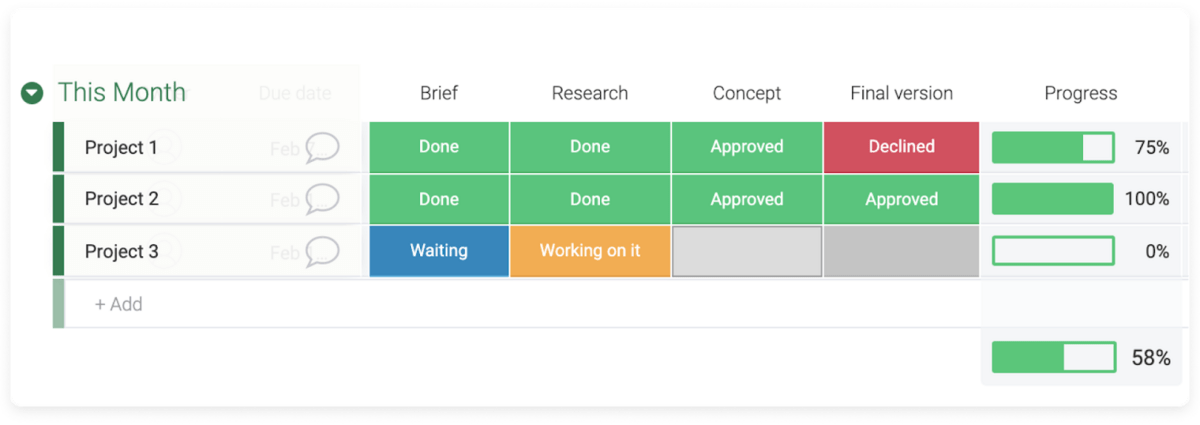
- Collaborate with your team: Using a central platform to manage your architectural projects makes collaboration easier. Everyone works from the same platform and can easily see what’s going on with the project at any given time.
Now, let’s take a look at the features to look out for in project management software, and how they can help you manage your architectural projects as efficiently as possible.
9 features you need in your project management software
To manage your architecture projects as efficiently as possible, your project management software needs to have certain features.
Some of them are typical of most project management platforms, but others are specific to the needs of architecture firms.
So let’s take a look at what these features are and why you need them.
1. Estimate project completion
Being able to accurately estimate your project end date is pretty important for architectural projects.
Why?
For 2 reasons:
- Update clients and stakeholders. Every client and stakeholder will want the project end date. For this reason, you need a platform that allows you to accurately estimate project completion.
- Check project progress. Having an end date gives you the structure you need to see if your project is running on schedule. Not to mention, it makes it easier to spot when things aren’t going to plan.

So when it comes to project management software, make sure you find a platform that allows you to estimate task duration.
With this feature, you can see how long each task will take and predict a completion date.
2. Track your time
If you or any of your team are charging by the hour, you need a platform that allows you to track your time.
With this feature, you can accurately track your billable hours.
Not to mention, you can also keep track of what your team has spent their time doing.
As a result, you can review how time has been used throughout the project. This helps with the following:
- Identifying bottlenecks. When you track your time, you can easily spot any bottlenecks in your workflow. And once you’ve spotted it, you can make changes to avoid the same thing happening in the future.
- Allocating your resources. When you see where most of your time is spent, you can make sure your resources are allocated efficiently.
Perhaps you need to hire more staff? Or invest in new tools? Whatever it is, you’ll have the insight you need to better inform your resource allocation on future projects.

So make sure your project management platform allows your team to track their time.
It’ll give you the insight you need to make improvements to your projects going forward, and help you accurately bill your clients.
3. Integrate with third-party applications
We don’t need to tell you that architects use a variety of third-party tools to plan and design their work.
Ranging from the latest CAD software to a variety of design programs, there’s a real mix of software used throughout the construction management process.
That’s why you need a platform that can integrate with third-party tools.
By integrating your external tools, you keep your workflow as streamlined as possible. As a result, you have a more efficient workflow and a team that collaborates better. It’s a win-win.

So make sure you find a platform that offers integration with tools you’re already using. Trust us when we say it’ll make your job easier.
4. Organize your resources
The word ‘resource’ is a pretty broad term that refers to any asset your business uses to function efficiently.
This could be anything from the employees you work with to the bricks and wood used to build a property.
And keeping track of these resources is vital in architectural project management.
You need to know what resources you have available in case you need to make any unexpected changes to the project. If you don’t know what’s going on with your resources, you’ll find it pretty difficult to make any changes.
Fortunately, this is where project management software can help.
Using a software solution with resource management capabilities makes it pretty easy to keep on top of all your resources.
Whether that’s coordinating materials or tracking employee workload, a project management platform should help you monitor your resources effectively.
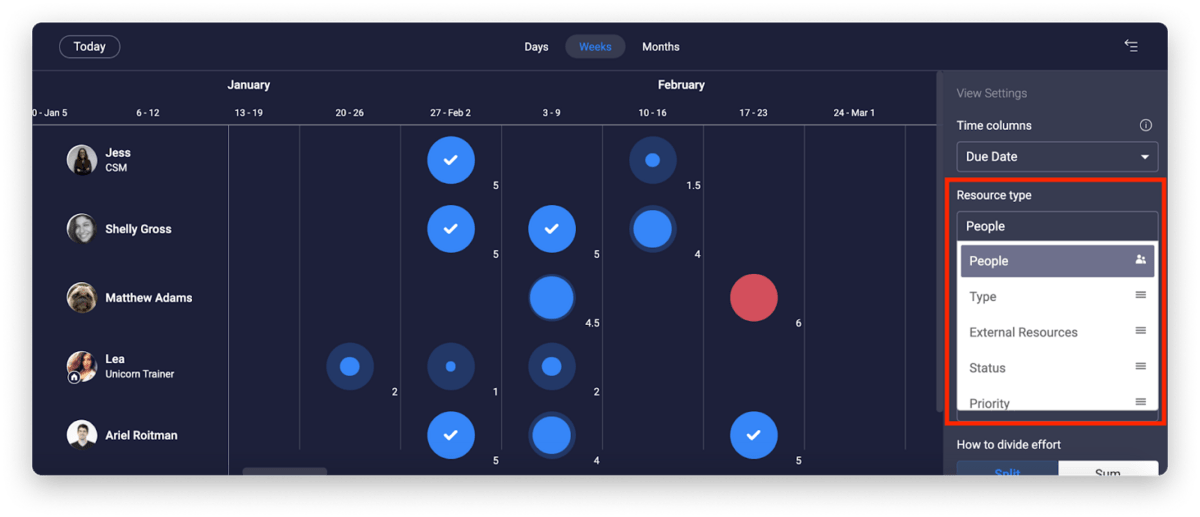
So make sure you opt for a platform that provides you oversight of your resources.
You’ll need this information to keep track of what resources you have available.
5. Keep track of your budget
Architecture and construction project management rely heavily on budgets.
Your budget determines the materials you can buy, the team you can recruit, and how much profit you can make.
So you need a platform that allows you to effectively track and manage your budget.
Here are a few of the specific budget features you should look out for:
- Job costing. Using the platform to price up all your costs and overheads for a specific project makes it easier to manage your spending. You can see everything you need to spend and allocate it accordingly.
- Tracking current spend vs. actual spend. Being able to track your current vs. actual spend allows you to keep on top of your budget in real-time.

- Billing and invoicing: Managing your invoices on the platform makes it easier to track what you’re spending and what you’re owed.
With these features, you can manage your budget and keep on top of spending once the project is underway.
6. Supervise your team
From mechanical and electrical engineers to carpenters and interior designers, architectural projects require a variety of specialists to get the job done.
That’s why you need a project management platform that allows you to manage your team.
With robust team management functions, managing several different specialists becomes much easier to handle and a lot less overwhelming.
It allows you to track their activities, oversee their workload, and review the quality of their work.
And with the right platform, you can invite guests to join your projects, too. This is pretty handy if you’re working with a variety of external contractors and designers.
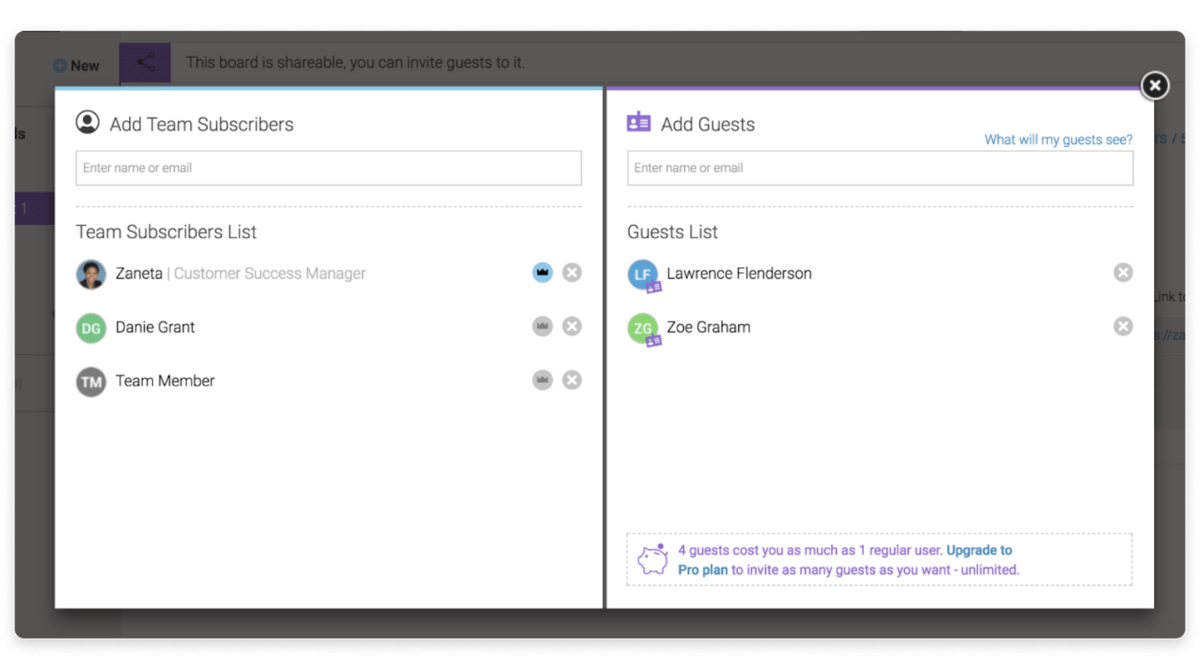
So make sure you find a platform that allows you to manage your team as efficiently as possible.
Whether that’s onboarding a new team member, assigning tasks, or keeping track of project progress — without this ability, you could find yourself struggling to manage such a varied team.
7. Manage your business relationships
As an architectural project manager, you have a lot of business relationships to uphold.
There are multiple clients you need to update, new commissions coming through the door, and upcoming deadlines for new tenders.
It’s a lot to handle.
But using project management software can help you manage every business relationship you have.
With the right platform, you can create a workflow that allows you to manage all aspects of the client management process.
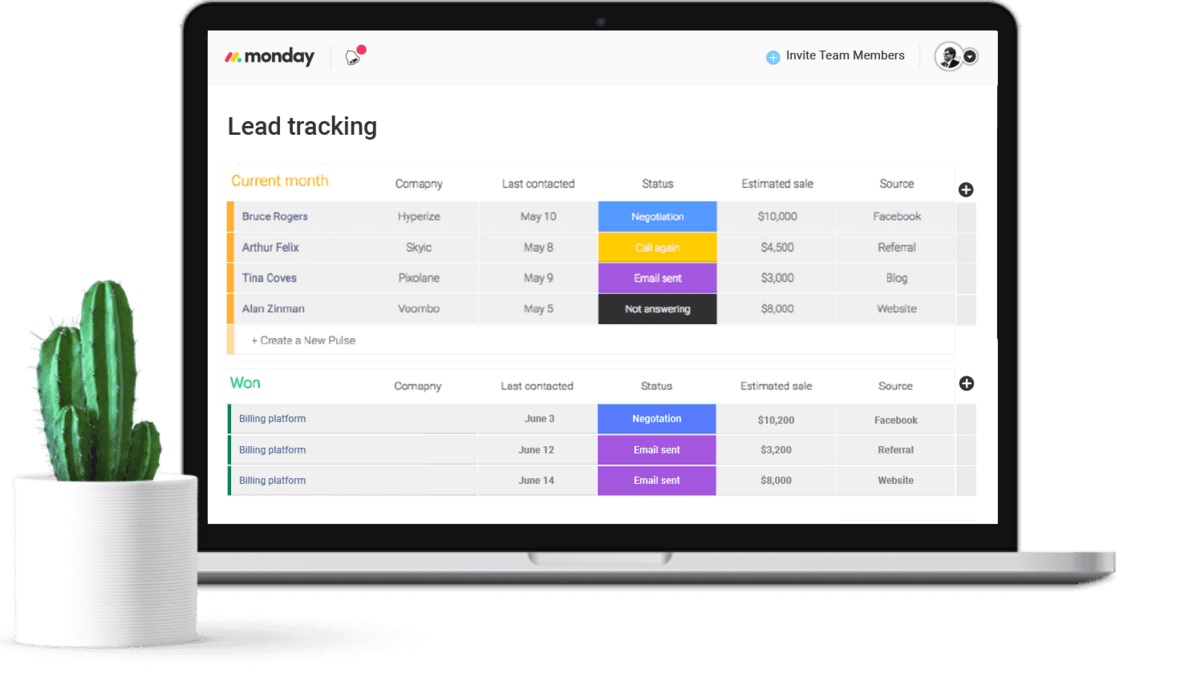
So make sure you spend some time reviewing the client management features of the platform you want to use.
These features will help you track and manage all your client relationships and provide them with a high-quality service.
8. Categorize your projects
It’s not unusual for architectural firms to have a variety of projects running at the same time. But having so many things happening at the same time can make it difficult to manage.
And that’s where categorizing your projects can help.
By grouping your projects into different categories, you can better organize your team’s workload. As a result, the variety of projects won’t seem quite as overwhelming.
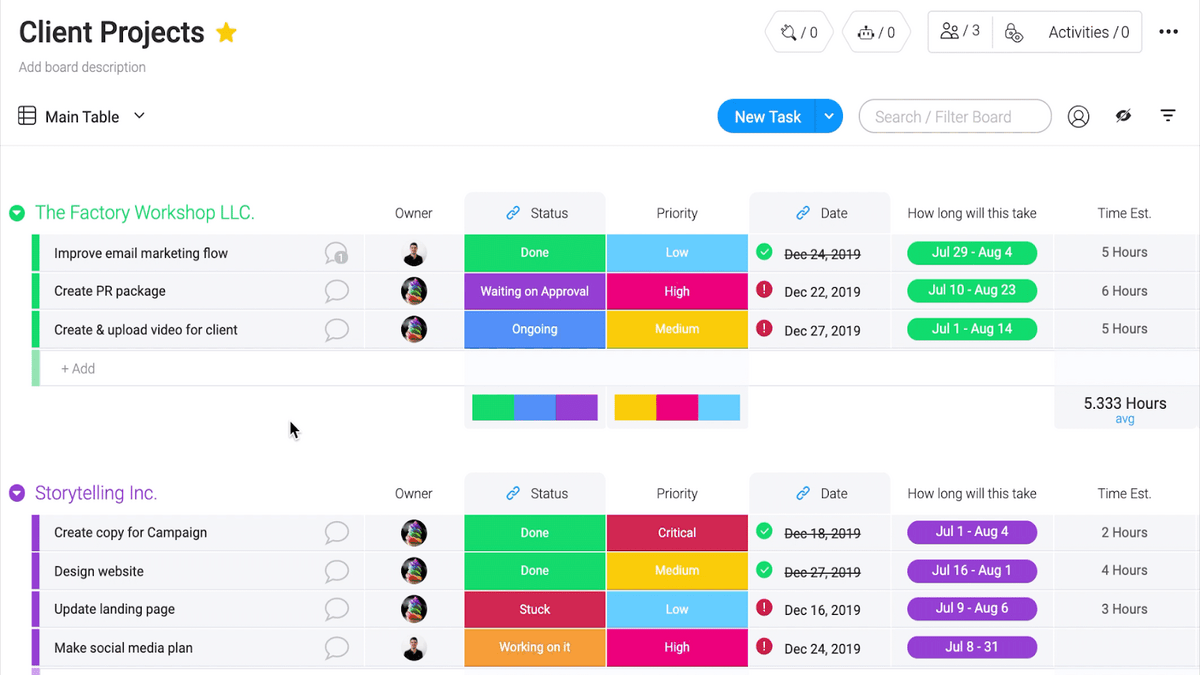
So when you’re looking for a project management platform, make sure it allows you to group your projects.
Whether that’s by priority, budget, or technical requirements, just make sure your project management platform allows you to categorize them in the way that suits you best.
9. Provide a mobile-friendly option
When you’re managing a building project, some of your team will work in the office, while others work on-site.
To make sure everyone can work together, you need a project management platform that’s easy to access, no matter where your team is located.
And what’s the best way to do this?
In short, you need a mobile-friendly platform.
With access to the platform on a mobile device, your team can quickly access project information from wherever they’re working.
This means that everyone in the team can keep up-to-speed on project progress and make sure projects are moving along on schedule.
And to make sure the mobile version works as well as the desktop version, you might want to consider using a platform that has a mobile app.
Why?
Because it’s specifically designed for mobile use, making it much better equipped than using a browser.
Take a look at monday.com’s mobile app as an example. Our app has specific features for mobile use, including navigation, scrolling, and the ability to drag and drop.

So when it comes to choosing the right platform, at the very least, make sure it’s mobile-friendly.
And if there’s a mobile app to download, you’ve hit the jackpot.
Manage your architectural projects with monday.com
It’s no secret that there are a lot of project management platforms out there for you to choose from.
There are so many that it can be pretty overwhelming trying to find the best platform for your team, right?
To save you the hassle of trawling through the internet, we’ve outlined some of the main reasons monday.com is the perfect platform for managing architectural projects.
Let’s take a look at our features in more detail.
1. Streamline your communication
Communication is an important skill to have as an architect, but it’s not always an easy skill to master.
On a day-to-day basis, you’re liaising with different people across a variety of departments. And without a clear and efficient method of communication, you might struggle to pull your team together.
But that’s where monday.com can help.
With our platform, you can streamline communication across all your projects.
You can add comments to tasks, share updates with your team, and even integrate communication channels such as Slack.
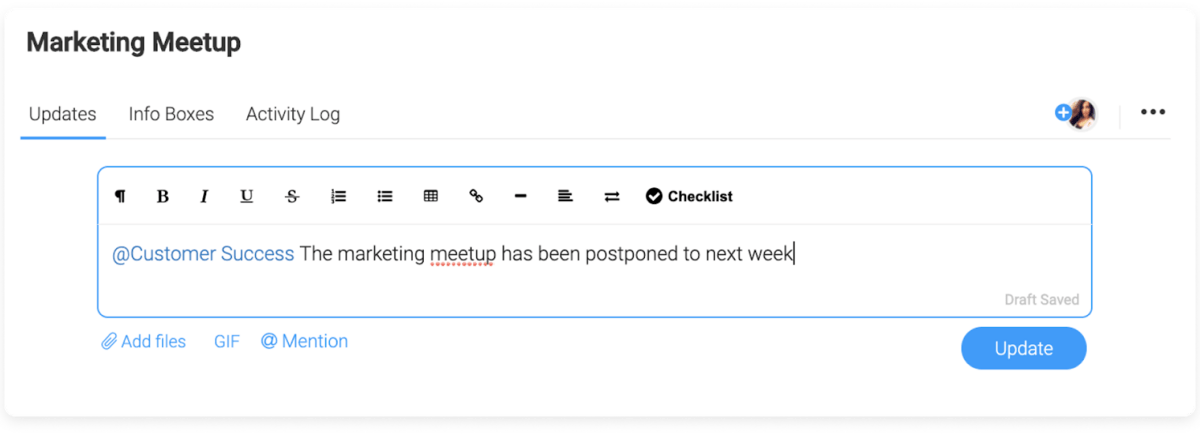
2. Collaborate with everyone
We understand that collaboration can be tricky in architectural projects.
Your team is a mix of professionals from different backgrounds and with different skill sets. As a result, collaboration isn’t always smooth sailing.
And that’s why we offer our architectural teams a variety of collaboration features.
From coordinating design ideas and budgets to allocating resources, we provide all the collaboration features you need to work as efficiently as possible on all your projects.

3. Customize your projects
Every architectural project is different, which is why you need a platform that can be customized.
Fortunately, customization is what we do best at monday.com.
Whether you want to add new columns to your boards or create custom automations, our platform allows teams to create their perfect workflow.

4. Manage your resources
We know that tracking resources can be overwhelming. Especially when it comes to architectural projects.
But with monday.com, resource management doesn’t have to be a burden.
Whether you need to monitor employee workload, manage your project budget, or track your materials, our software allows you to efficiently manage your resources.
You can even use our customizable resource management template to start tracking your resources straight away.
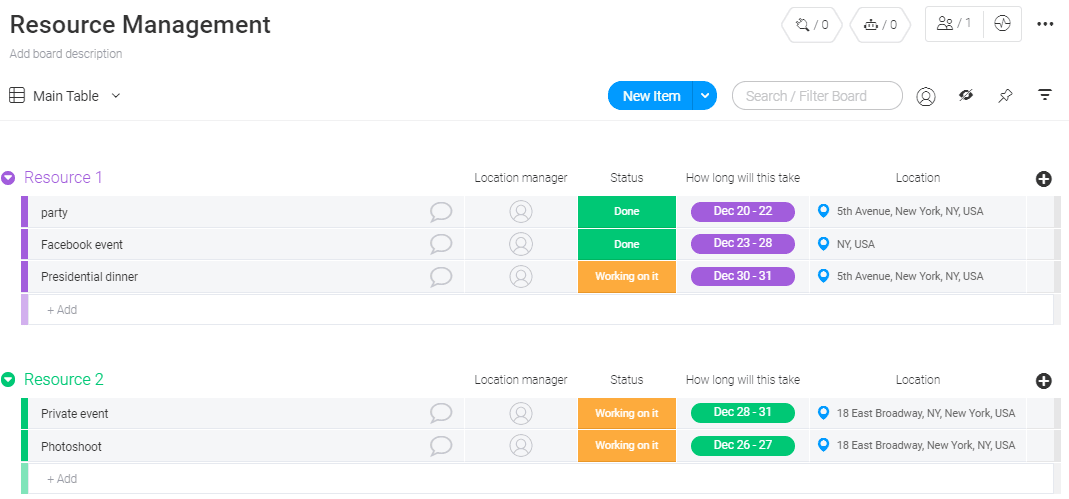
5. Share files and images
Sharing designs and images are pretty commonplace in architectural projects.
From a 3D model of a fresh design to a blueprint for a new building, you need to be able to share files efficiently.
At monday.com, we get that. That’s why our users can share architectural images and design files on our platform.
Simply upload your file to the project, and everyone in the team can access it. You can even add files to specific tasks, too.
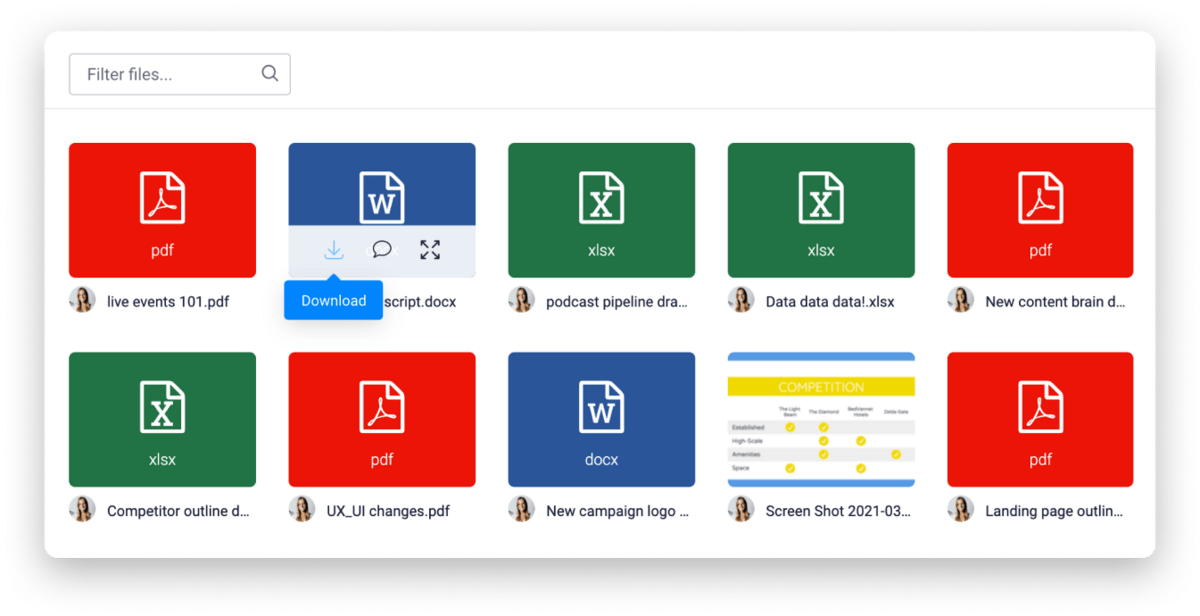
Let’s get the ball rolling
There you have it. Everything you need to know about project management software for architects and the features you need to look out for.
So what next?
It’s time to get the ball rolling and sign up for some project management software.
Having read this article, you know what to look out for. But if you’re still not sure where to start, give monday.com a try.
As a Work OS, we help architectural teams manage their entire workflow. Our software allows teams to customize their processes and plan their projects down to the last detail.
We’d recommend using our design weekly tasks template to get things started.
The post Everything you need to know about project management software for architects appeared first on monday.com Blog.
Leave a Comment
You must be logged in to post a comment.
